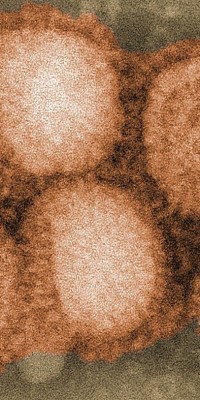Avian Influenza A H3N2 variant viruses (also known as “H3N2v” viruses) with the matrix (M) gene from the 2009 H1N1 pandemic virus were first detected in people in July 2011.
Viruses can infect birds and mammals. In birds, humans, and pigs, the virus has mutated into many strains. H3N2 is increasingly abundant in seasonal influenza, which kills an estimated 36,000 people in the United States each year.
Additionally, in Korea, genetically similar canine influenza virus strains of avian origin were isolated from dogs exhibiting severe respiratory disease.
Transmission:
Avian influenza A viruses may be transmitted from animals to humans directly from birds or from avian influenza A virus-contaminated environments to people, or through an intermediate host (e.g.: a pig).
Infected birds can shed avian influenza A viruses in their saliva, nasal secretions, and feces. Susceptible birds become infected when they have contact with the virus as it is shed by infected birds. They also can become infected through contact with surfaces that are contaminated with virus from infected birds.
Symptoms:
Symptoms of H3N2v infection are similar to those of seasonal flu viruses and can include fever and respiratory symptoms, such as cough and runny nose, and possibly other symptoms, such as body aches, nausea, vomiting, or diarrhea. Avian influenza A viruses can sicken and even kill certain domesticated bird species including chickens, ducks, and turkeys.


